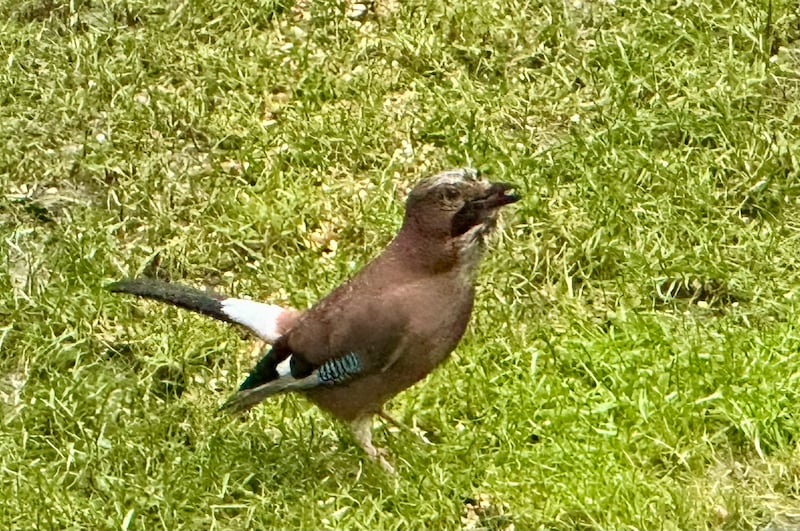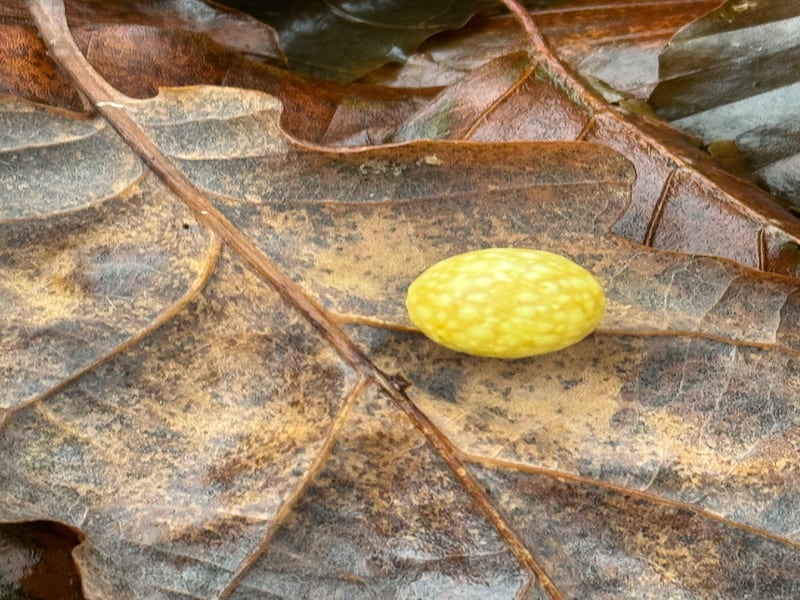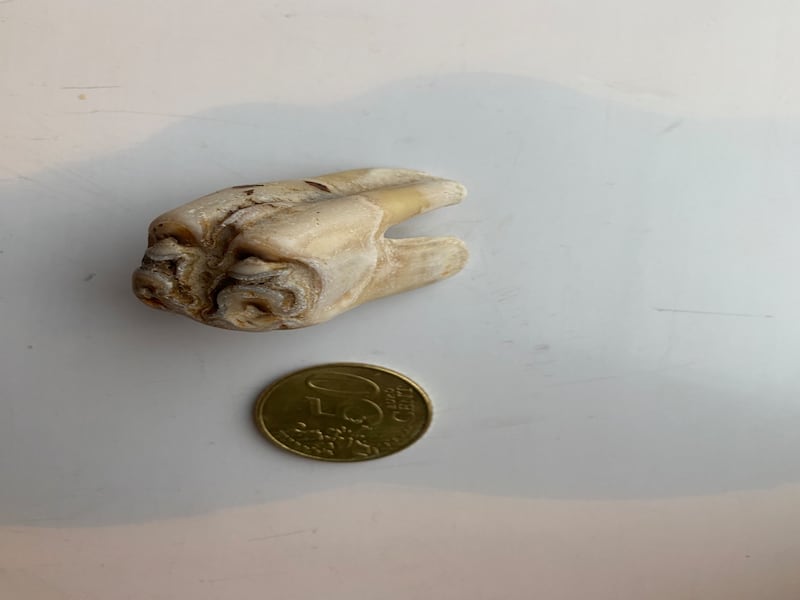What is this? It was smaller than my fingernail. I found it in my home on January 16th. Aidan Herron, Skerries
It is the 20-plume moth, which is often encountered overwintering. Its larval food plant is honeysuckle. The larvae feed in June and July on the leaves and flowers of the honeysuckle and then pupate on the ground below. The adults emerge at the end of August and fly at night until the end of autumn, when they will overwinter as adults. These are classified as micromoths because of their very small size.

During lockdown, we regularly saw a family of four jays. This past year, just this single one visits the garden from time to time. Brendan Lyons, Dublin
This is our most colourful member of the crow family; the Irish race of jays is separate from that elsewhere in Europe, being noticeably darker and browner. It is usually associated with woodland, where it collects and hides acorns and, to a lesser extent, beech mast and hazelnuts, to tide it over the winter. It has a prodigious memory and can remember the whereabouts of several thousand nuts buried in ones and twos. It will come to gardens to feed on peanuts and even try to cache them away too.

I found this sitting on an oak leaf in my garden, glowing among the piles of leaves. When I picked up the leaf, it was firmly stuck to it. Was it a golden sphere full of eggs? Laura Malone, Kerry
It was a golden sphere all right, but it was not full of eggs. This is a cherry gall made by a tiny gall wasp called Cynips quercusfolii. The gall can vary in colour from green to gold to bright red. The tiny wasp lays an egg on the back of a growing oak leaf, and this causes the formation of the gall, inside of which the tiny grub lives feeding on its tissues. The galls persist on the fallen leaves over the winter. Eventually an adult wasp will emerge to start the proceedings again.
[ We found a huge dead spider in our classroom. What is it?Opens in new window ]

We regularly pick up the call of the blackcap on the Merlin Bird app throughout the year but don’t often see them. However, when the spindle berries are ripe, they seem to find them irresistible and are easily observed. We have had at least two males and one female feasting on them in our garden. Fintan Cullen, Co Kildare
The free Merlin app is excellent for identifying bird calls, but nothing can beat actually seeing them. The native spindle tree adds greatly to the biodiversity in your garden and its glowing pink berries are valued as food by birds. The orange pulp is very rich in fat and protein and robins, blackbirds, fieldfares, waxwings and blackcaps all feast on them. However, the seed is poisonous and needs to be passed through the gut quickly – which these birds can do.
[ This blackbird has become another beak to feedOpens in new window ]

I found this on Travelahawk Beach near Wicklow town when visiting my Nanny before Christmas. It looks like a tooth. Could it have belonged to a dinosaur? Conor Hansen (6)
No, I fear, it is just the tooth of a cow. A dinosaur’s tooth would be a fossil, which is a rock in the shape of a tooth and would be more than 70 million years old. This beach is allegedly where St Patrick first landed and where suspicious local people threw rocks at the arrivals, knocking out his companion’s front teeth. Manntán means a person with no front teeth, so the first church built by them was called Cill Mhanntáin which is now the name for Co Wicklow.
Please submit your nature query, observation, or photo, with a location, via irishtimes.com/eyeonnature or by email to weekend@irishtimes.com






















